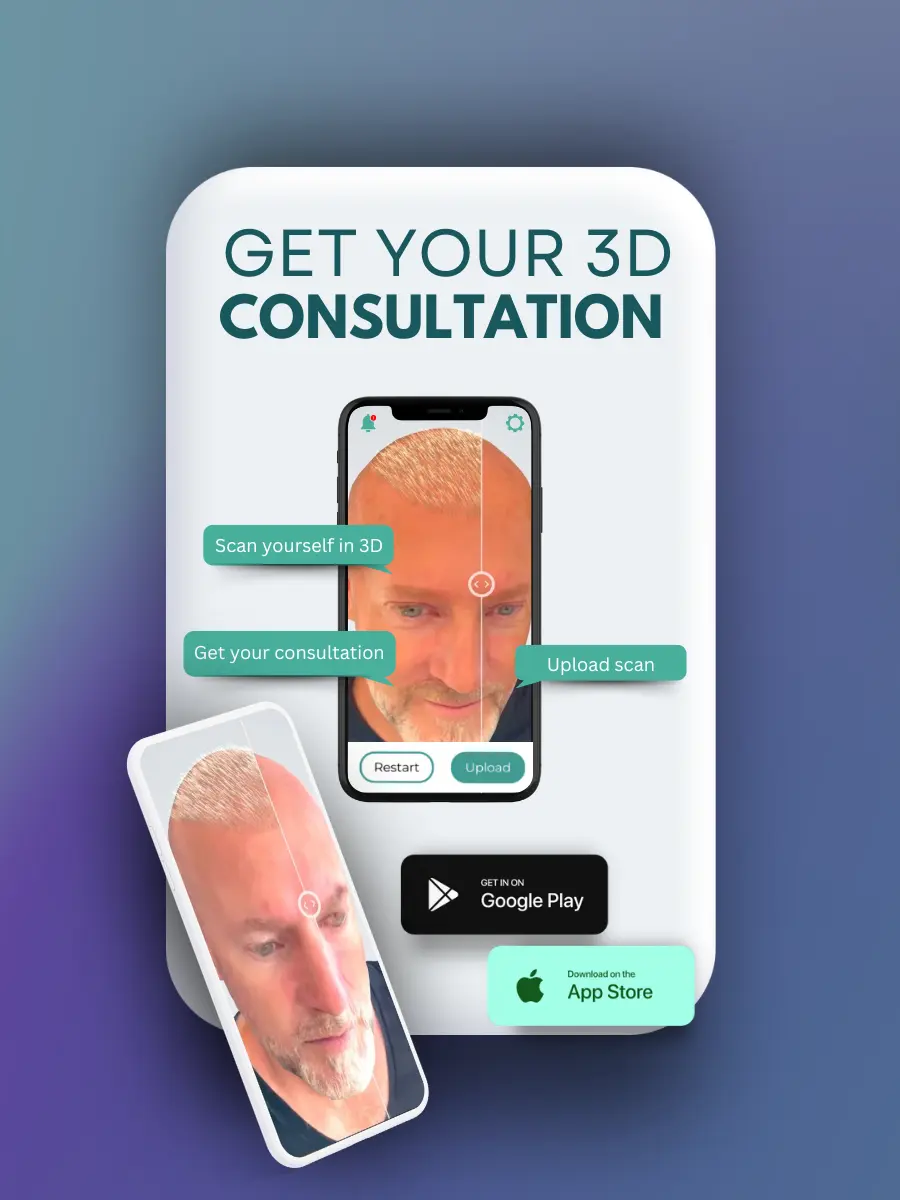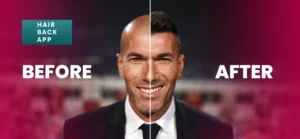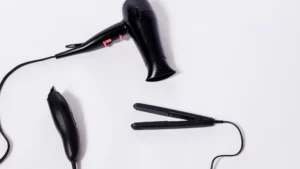Suffering from hair loss and want to learn how to stop hair loss? You are in the right place.
Hair loss is a common concern affecting individuals globally, irrespective of age, gender, or ethnicity. Beyond its cosmetic implications, hair loss can significantly impact self-esteem and confidence levels. Research suggests that a significant portion of the population experiences hair loss by a certain age, highlighting the urgency of addressing this issue.
In recent years, there has been a growing interest in natural remedies for hair loss due to concerns surrounding the potential side effects of conventional treatments. Natural approaches not only target hair regrowth but also prioritize overall health and well-being.
My name is Emma Wright, your hair restoration specialist. In this guide, we explore holistic methods to halt hair loss and stimulate natural regrowth. From understanding the root causes to implementing lifestyle changes and exploring remedies, this guide equips you to nurture healthier, fuller hair.
Hair loss affects millions of individuals worldwide, with statistics indicating that a significant percentage of men and women will experience some form of hair loss during their lifetime. This prevalence underscores the importance of addressing hair loss as a widespread concern that warrants attention and action.
Natural approaches to hair loss offer several advantages, including minimizing the risk of adverse effects associated with conventional treatments and promoting overall health. By adopting natural methods, individuals can address the root causes of hair loss while supporting their body’s natural processes for hair regrowth.
By the end of this guide, you will have the knowledge and resources to take proactive steps toward addressing hair loss naturally and restoring confidence in your hair health.
What is Hair Loss?
Hair loss, also known as alopecia, refers to the gradual or sudden loss of hair from the scalp or other parts of the body where hair typically grows. It can manifest in various forms, including thinning hair, bald patches, or complete baldness.
Additionally, hair loss can affect individuals of all ages, genders, and ethnicities and can result from a combination of genetic, hormonal, environmental, and lifestyle factors.
Types of Hair Loss
There are several types of hair loss, including:
- Androgenetic Alopecia: Also known as male-pattern baldness or female-pattern baldness, this is the most common type of hair loss and is typically classified as hereditary hair loss. It occurs when hair follicles shrink over time, leading to thinner and shorter hair strands until eventually, no new hair grows.
- Alopecia Areata: This is an autoimmune condition characterized by sudden hair loss in small, round patches on the scalp or other parts of the body. It occurs when the immune system mistakenly attacks hair follicles, causing them to shrink and temporarily cease hair production.
- Telogen Effluvium: This type of hair loss occurs when a significant number of hair follicles enter the resting (telogen) phase prematurely, leading to increased shedding and thinning of the hair. Telogen effluvium can be triggered by factors such as stress, illness, hormonal changes, medications, or nutritional deficiencies.
- Traction Alopecia: This form of hair loss results from repeated pulling or tension on the hair follicles, often due to hairstyles that involve tight braids, ponytails, or hair extensions. Over time, this constant tension can damage the follicles and cause hair to become thin and break off.
- Scarring Alopecia: Also known as cicatricial alopecia, this type of hair loss occurs when hair follicles are permanently destroyed and replaced by scar tissue. It can result from conditions such as lupus, lichen planopilaris, lichen planus, or certain types of fungal infections.
- Anagen Effluvium: This type of hair loss occurs during the anagen (growth) phase of the hair cycle and is often associated with chemotherapy or radiation therapy for cancer treatment. These treatments target rapidly dividing cells, including hair follicles, leading to sudden and widespread hair loss.
4 Ways to Stop Hair Loss
1. Diet and Nutrition for Hair Health
A balanced diet rich in vitamins, minerals, and proteins is essential for promoting healthy hair growth and preventing hair loss. Incorporating the following nutrient-rich foods into your diet can support optimal hair health:
- Protein: Include sources of lean protein such as poultry, fish, eggs, legumes, and nuts to provide the building blocks for hair growth.
- Iron: Consume iron-rich foods like lean meats, spinach, lentils, and fortified cereals to prevent iron deficiency, which can contribute to hair loss.
- Omega-3 Fatty Acids: Incorporate foods high in omega-3 fatty acids, such as salmon, walnuts, flaxseeds, and chia seeds, to nourish the scalp and promote hair growth.
- Vitamins and Antioxidants: Ensure adequate intake of vitamins A, C, and E, as well as antioxidants like vitamin C and zinc, found in fruits, vegetables, nuts, and seeds, to support healthy hair follicles and scalp.
2. Hydration and Its Impact on Hair Growth
Proper hydration is essential for maintaining healthy hair and scalp. Drinking an adequate amount of water each day helps to keep hair strands hydrated and promotes the transportation of nutrients to the hair follicles.
Aim to drink at least eight glasses of water per day and limit consumption of dehydrating beverages like alcohol and caffeinated drinks.
3. Stress Management Techniques
Chronic stress can contribute to hair loss by disrupting the hair growth cycle and increasing inflammation in the body. Incorporating stress management techniques into your daily routine can help mitigate the effects of stress on your hair and overall well-being.
Consider practicing relaxation techniques such as deep breathing exercises, meditation, yoga, or spending time in nature to reduce stress levels and promote hair health.
4. Regular Exercise for Circulation
Regular physical activity not only benefits your overall health but also promotes circulation, including blood flow to the scalp. Improved circulation ensures that hair follicles receive an adequate supply of oxygen and nutrients, which are essential for healthy hair growth.
Incorporate activities such as walking, jogging, cycling, or strength training into your routine to support circulation and promote optimal hair health.
4 Natural Remedies for Hair Loss
1. Scalp Massage Techniques to Promote Blood Flow
Scalp massage is a simple yet effective way to stimulate blood circulation to the hair follicles, promoting hair growth and reducing hair loss. You can perform scalp massage using your fingertips or a handheld scalp massager.
Apply gentle pressure in circular motions across the scalp for 5-10 minutes daily to increase blood flow and nourish the hair follicles.
2. Herbal Remedies and Supplements
Several herbal remedies and supplements have been traditionally used to promote hair growth and prevent hair loss.
Some of the most commonly recommended options include:
- Saw Palmetto: This herbal supplement may help block the hormone dihydrotestosterone (DHT), which is associated with hair loss in both men and women.
- Rosemary Oil: Applying rosemary oil to the scalp has been shown to stimulate hair growth and improve hair thickness due to its anti-inflammatory and antioxidant properties.
- Pumpkin Seed Oil: Rich in essential fatty acids, vitamins, and minerals, pumpkin seed oil is believed to support hair growth and prevent hair loss when applied topically or taken as a supplement.
3. Essential Oils for Hair Growth
Essential oils are concentrated plant extracts known for their therapeutic properties, including promoting hair growth and improving scalp health.
Some popular essential oils for hair growth include:
- Peppermint Oil: Known for its cooling and stimulating effects, peppermint oil can help improve blood circulation to the scalp and promote hair growth.
- Lavender Oil: Lavender oil has calming and antimicrobial properties, making it beneficial for soothing the scalp and supporting healthy hair growth.
- Tea Tree Oil: Tea tree oil has antifungal and antibacterial properties that can help alleviate scalp conditions like dandruff and promote a healthy environment for hair growth.
4. DIY Hair Masks and Treatments Using Natural Ingredients
Creating DIY hair masks and treatments using natural ingredients can nourish the scalp, strengthen hair strands, and promote hair growth.
Some popular ingredients for DIY hair masks include:
- Coconut Oil: Rich in fatty acids and vitamins, coconut oil moisturizes the scalp and hair, preventing breakage and promoting hair growth.
- Aloe Vera: Aloe vera gel contains enzymes that promote healthy hair growth and soothe the scalp, making it an excellent ingredient for DIY hair masks.
- Honey: Honey is a natural humectant that helps retain moisture in the hair and scalp, promoting hydration and preventing hair loss.

Hair Care Practices for Preventing Hair Loss
-
Gentle Hair Care Routines
Adopting a gentle hair care routine is crucial for preventing hair loss and minimizing damage to the hair and scalp. Avoid using harsh chemicals, such as sulfates and parabens, in your hair products, as they can strip the hair of its natural oils and contribute to hair loss.
Additionally, minimize the use of heat styling tools and opt for loose hairstyles that do not tug or pull on the hair follicles.
-
Choosing the Right Hair Products
Selecting the right hair products can make a significant difference in preventing hair loss and maintaining hair health. Look for sulfate-free shampoos and conditioners that are gentle on the scalp and hair.
Avoid products containing alcohol or other drying ingredients, as they can strip the hair of moisture and contribute to breakage. Consider using natural and organic hair care products that nourish and strengthen the hair without harsh chemicals.
-
Proper Hair Washing and Drying Techniques
Proper hair washing and drying techniques are essential for preventing hair loss and promoting scalp health. When washing your hair, use lukewarm water and gently massage the scalp with your fingertips to remove dirt, oil, and product buildup. Avoid scrubbing the scalp vigorously, as this can damage the hair follicles and lead to breakage.
After washing, gently pat your hair dry with a soft towel to remove excess water. Avoid rubbing the hair vigorously, as this can cause friction and breakage.
Allow your hair to air dry whenever possible, as excessive heat from hair dryers can damage the hair and contribute to hair loss. If using a hair dryer, use a low heat setting and keep the dryer at least six inches away from your hair to minimize damage.
-
Regular Trimming and Scalp Exfoliation
Regular trimming of the hair helps to prevent split ends and breakage, which can contribute to hair loss. Aim to trim your hair every 6-8 weeks to maintain healthy ends and promote hair growth.
Additionally, scalp exfoliation can help remove dead skin cells, excess oil, and product buildup, promoting a healthy environment for hair growth. Use a gentle scalp scrub or exfoliating brush once or twice a week to stimulate circulation and maintain scalp health.
Professional Treatments and Therapies For Hair Loss
Professional hair loss treatments offer advanced solutions for addressing hair loss and promoting hair growth.
Some common professional treatments include:
- Platelet-Rich Plasma (PRP) Therapy: PRP therapy involves extracting platelets from the patient’s blood and injecting them into the scalp to stimulate hair follicles’ growth and repair.
- Laser Therapy: Low-level laser therapy (LLLT) uses light energy to stimulate hair follicles, improve blood circulation, and promote hair growth.
- Microneedling: Microneedling involves using a device with fine needles to create micro-injuries in the scalp, triggering the body’s natural healing response and promoting hair growth.
- Hair Transplant Surgery: Hair transplant surgery involves transplanting hair follicles from donor areas to areas of thinning or balding to restore hair growth permanently.
Conclusion
Hair loss can have a significant impact on self-esteem and confidence, but with the right knowledge and proactive steps, it is possible to address and even reverse the effects naturally. Throughout this guide, we have explored various strategies and approaches for stopping hair loss and regrowing hair naturally.
From understanding the underlying causes of hair loss to implementing lifestyle changes, exploring natural remedies, and considering professional treatments, there are numerous avenues to explore on the journey to healthier, fuller hair.
For those considering professional treatments, consulting with a dermatologist or trichologist is crucial to assess individual needs and explore appropriate options. Whether it’s PRP therapy, laser therapy, microneedling, or hair transplant surgery, understanding the potential risks and benefits of each treatment is essential in making informed decisions about your hair health.
Remember, addressing hair loss is a journey that requires patience and perseverance. Results may not be immediate, but with consistent effort and the right approach, you can achieve healthier, fuller hair and regain confidence in your appearance.














